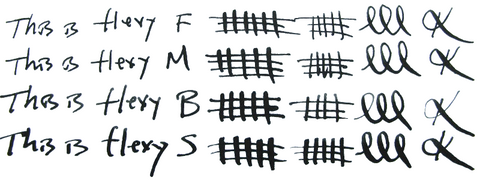Danitrio Ko-Omote Noh-Men Maki-E on Hyotan Fountain Pen
Starting at $480/mo for 6 month no-interest installments, 10% down using 
Learn about our Payment Relief Plan. |
|---|
Couldn't load pickup availability
✓ 100% Genuine Urushi
✓ Contains the Maki-E Red Seal (Highest Quality of Maki-E Art)
✓ Hand-painted by highly-trained Japanese Artisans
✮ FEATURED IN PEN WORLD MAGAZINE AUGUST 2020 ISSUE ✮
The ko-omote (“young girl”) and the Hannya (“demon”) are both characters in the Noh Japanese plays.

The Hannya was actually a once human woman that was envious and jealous, which turned her into a demon. The triangular pattern motif behind the demon represents Uroko (“scales”) which is inspired from the scale of a fish, meaning protection.

The ko-omote is typically depicted in the Noh play as an young innocent beauty. The tortoise shell pattern motif adjacent to the young girl represents Kikko (“longevity”). Notice the in-lay of raden applied in the center of the flowers.
About the Japanese Noh Plays:
The Noh play is the oldest of the Japanese traditional theater forms conceived in the early 14th century. Its name comes from from nō, which means talent or skill. The plays are inspired by tales from traditional literature typically involving the supernatural being transformed into a human. Actors will wear traditional costumes, carry props, and dance while singing through the Noh masks that are worn over their face to potray the emotions of the character. Common characters found on the Noh masks may include women, children, elderly, and ghosts. Even the masks itself is carefully hand-crafted to properly portray the character and allow for optimal accoustics when the actor sings into it.
About Danitrio Hyotan Fountain Pen Series:
The Hyotan in Japanese means "Gourd" or "Calabash", which is a fruit that can sometimes come in an hourglass shape. This series of pen does come in the hourglass shape; in the US, collectors of Danitrio pens have coined it the Mae West, one of the biggest Hollywood stars in the twentieth century known for her hourglass figure.
Nib Details:

This pen is furnished with an 18k Gold, two-toned #6 nib. What has been described by many Danitrio collectors as the fireball nib is an image of “Kaen-Kohai” which is a flame-shaped halo of “Fudo Myoo” (Acala, the God of Fire). This halo is commonly painted on the back of Japanese Buddhist statues.
An UrushiPen.com representative will contact you to confirm nib tip size preference (fine, medium, broad, or stub) following the placement of the order.

Technical Specification:
| Cap Length | 65 mm (2.56") |
| Cap Diameter | 21 mm (0.83") |
| Barrel Length | 110 mm (4.33") |
| Barrel Diameter | 19 mm (0.75") |
| Pen Length (Closed) | 147 mm (5.79") |
| Pen Length (Posted) | Cap does not post |
| Net Weight | 35.5 g (1.25 oz) |
| Net Weight (w/ink) | 37.2 g (1.31 oz) |
| Filling System | Cartridge/Converter |
About the Artisan:

This pen was hand-painted by Koichiro Okazaki (Kogaku). Born in 1959. He is a renown Maki-E artisan in Japan and considers himself wholeheartedly traditional when it comes to Maki-E. Many of his Maki-E works have been accepted and rewarded at national art exhibitions. He had learned Maki-E from a master and became an independent artisan 5 years later. He was recognized with Kao (authorized monogram) by Kuda Munenori of Sado Omote school in 1991. He performs Maki-E on many traditional accessories, hair pins, combs, jewelry, and fine writing instruments.


